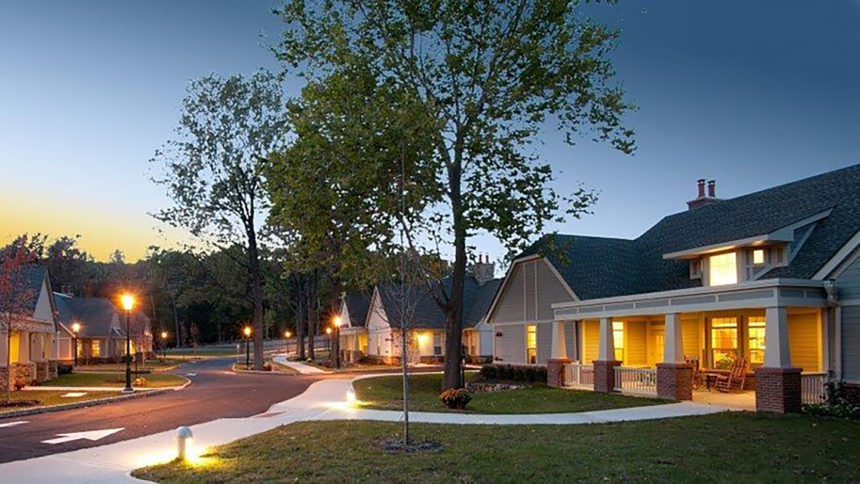
Among struggling nursing homes, the share of facilities closing jumped significantly during the main pandemic years, even as the percent selling to for-profit organizations declined.
Such shifting dynamics will require innovation at the operator, state and federal levels, a panel including finance experts and the leader of a Rhode Island aging services provider said Thursday.
“All the nursing homes are not going to go out of business. People think that’s going to happen. You heard me say earlier it’s gone from 16,000 now to, call it, 15,000. But 11,000 are for-profit and it’s 75% Medicaid,” said Dan Hermann, chief financial officer at investment bank Ziegler. “So we need our states … they’re going to have to get involved. As we all know it’s breaking the back of the states, so innovative models are going to present themselves in some way to stop this train.”
Hermann said new models are beginning to rise up organically, presenting small-scale solutions. But he warned that financially strapped not-for-profit organizations can’t wait to either adapt or move on from skilled nursing assets in order to support a broader mission.
“We’ve elevated the rank of ability to attract and retain talent. That’s been improving in the last six to nine months. But the complexity of skilled nursing, the financial pressure, or you could say poor reimbursement in a number of states, if not across the board … those are all causing folks to raise their hand and seek affiliations or potentially close,” Hermann added during the session hosted by The Center for Innovation.
“The biggest thing we say to this group is please don’t wait too long. If you wait too long, the only buyers are for-profit,” Hermann emphasized.
Such “end-of-mission” conversations have become reality for a larger share of nonprofit providers, added Mim Rossi, a Ziegler senior vice president who noted that 26% of the 200-plus nonprofit dissolutions between 2020 and 2023 resulted in closure. Over a longer period dating back to 2015, that percentage shrank to under 17%.
“The hardest hit are those with nursing-predominant services or a poor payer mix that’s not holding over financially distressed facilities,” Rossi said.
“We have multiple headwinds, but all hope is not lost,” she added.
One provider’s success
Matthew Trimble, CEO of St. Elizabeth Community in Rhode Island, outlined how his organization found a path forward as it was losing significantly across two highly occupied skilled nursing facilities.
“The gap in the cost of care we were providing versus the Medicaid reimbursement rate was exceeding $100 [per patient] a day. We were drawing on our endowment to support both skilled nursing facilities at a rate that was not sustainable,” Trimble said.
After the organization opened four, 12-bed Green Houses and moved those toward 100% occupancy, it began to reconsider the wisdom of operating its Manor facility about 30 miles away. The company ultimately sold the nursing home, netting $5.2 million in proceeds that it planned to use on other strategic efforts.
While those activities have been delayed by the pandemic, Trimble said St. Elizabeth is now focused on shifting its payer mix — an approach aided by the draw of the Green House homes to seniors who are willing to move for that level of care.
Because of dwindling margins, the state’s mom-and-pop nursing home owners have rapidly departed Rhode Island, Trimble said, leaving 60% of nursing homes there in the hands of out-of-state organizations.
He attributed much of that to the state’s stagnant Medicaid rates, although the governor’s budget does propose a nearly 7% nursing home increase and the first rebasing since 2012.
“Like many members of our board always say, hope certainly is not a strategy,” Trimble said.
“But we’re looking at opportunities on a strategic-planning level. You know, looking at things like in the senior living space. We have made a conscious effort to kind of go back on our [plans]. Originally, we wanted our Green House homes to be 50% private and 50% Medicaid. And we’ve had to now make a conscious effort to really try and increase the private pay census in the Green Houses.”
Seeking fair pay for good care
Remaining nimble and doing what it takes to attract higher-paying patients will be critical for providers seeking to stay in the skilled nursing space, the Zeigler experts said.
Merging with a multi-state organization before a sale is necessary also can strengthen a nursing home’s financial position, Hermann said, especially in markets with high Medicare Advantage penetration.
And state models that incentive care through new models will be a bulwark for others. He noted the use of Medicaid to fund some assisted living care in states such as Illinois, while Center for Innovation spokesman Alex Spanko noted that a handful of states now fund add-ons for nursing homes adopting small-house models.
Differentiation, and providing needed access to high-quality care, will continue to drive survival in a market where buyers are hungry to invest in skilled beds.
“There is always going to be a portion of people who require maybe a more intensive level of care and also always a proportion of people who would prefer to receive care in a communal setting,” Spanko said. “How are you setting yourself up to be that provider of choice in a market where maybe there’s less global demand for nursing home beds, but people want, you know, privacy, people want to really know their caregivers?”




